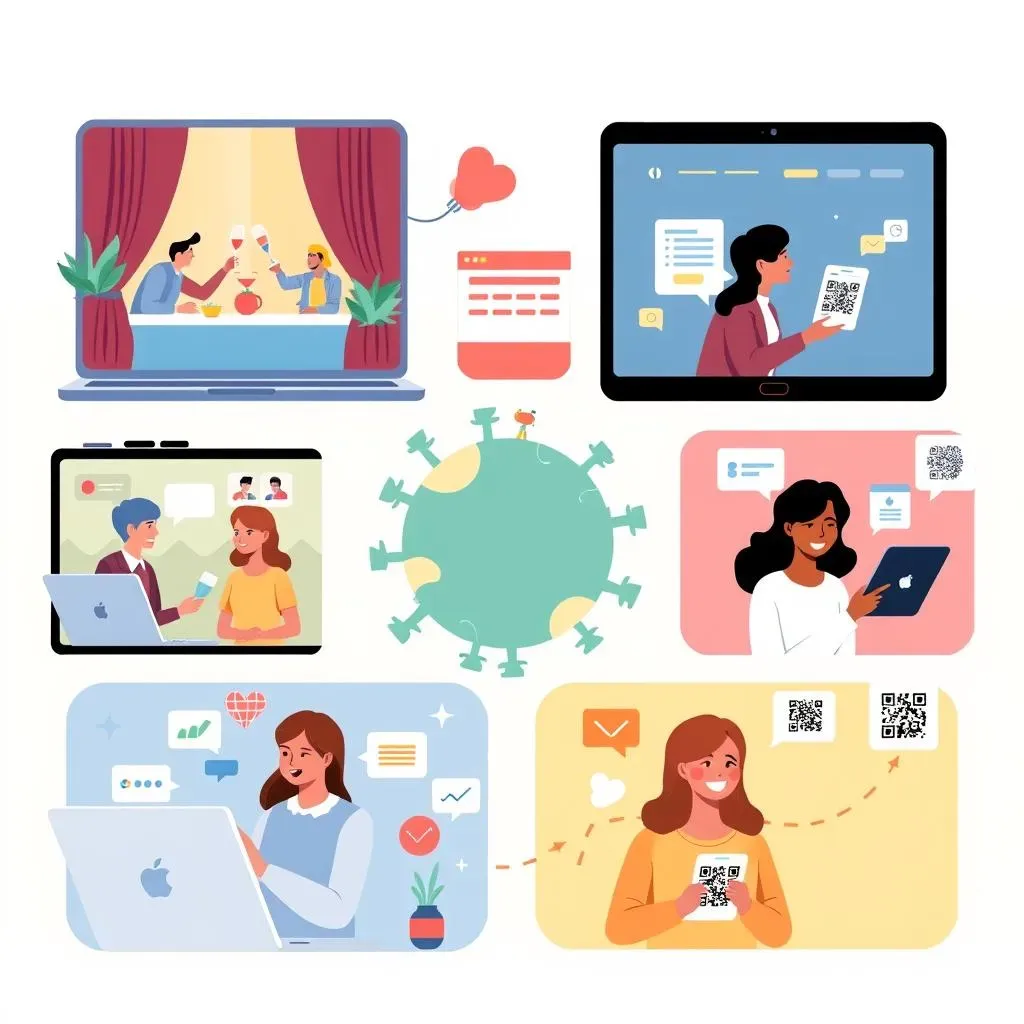Table of Contents
The COVID-19 pandemic dramatically altered the landscape of non-profit fundraising. Suddenly, traditional fundraising events—galas, marathons, bake sales—became impossible, leaving many organizations scrambling to find alternative ways to secure vital funding. This article explores the challenges and triumphs of non-profit fundraising events during COVID-19. We'll examine the immediate impact the pandemic had on established fundraising methods, highlighting the struggles and quick adaptations many organizations had to make. Then, we'll delve into the innovative solutions that emerged, showcasing the creative and resourceful strategies nonprofits employed to continue their crucial work. From pivoting to virtual events to embracing new technologies, we'll explore the diverse approaches taken to maintain donor engagement and financial stability. Finally, we'll look ahead to the future of non-profit fundraising, considering the lessons learned and how these experiences may shape fundraising practices moving forward. Get ready to discover inspiring stories of resilience and learn valuable strategies for navigating the complexities of Non-profit fundraising events during COVID-19.
The Impact of COVID19 on Nonprofit Fundraising Events

The Impact of COVID19 on Nonprofit Fundraising Events
Cancelled Events and Lost Revenue
Picture this: March 2020. Nonprofits across the globe are gearing up for their biggest fundraising events of the year. Then, *bam*—COVID-19 hits. Suddenly, in-person events—galas, marathons, auctions—are cancelled. The financial impact was immediate and devastating. Thousands of events were scrapped, leaving a massive hole in many organizations' budgets. Imagine the disappointment of volunteers and donors alike, their plans upended, their charitable contributions potentially delayed.
The reliance on these events was often substantial. Many nonprofits budgeted a significant portion of their annual income from these events. With cancellations came not only lost revenue but also a loss of momentum. The energy and excitement generated by these events—crucial for donor engagement—disappeared overnight. This sudden disruption forced many organizations to rethink their entire fundraising strategy, pushing them to explore uncharted territories.
- Loss of in-person donor interaction
- Reduced volunteer engagement
- Significant budget shortfalls
Shifting Donor Behavior and Economic Uncertainty
The pandemic also drastically altered donor behavior. With economic uncertainty looming, many individuals and corporations tightened their belts, reducing their charitable giving. This wasn't necessarily a reflection of decreased generosity; it was simply a matter of survival. People were worried about their own financial security and had less disposable income to donate. This created a double whammy for nonprofits—fewer events and less money from donors.
Furthermore, the focus shifted. Donations were diverted toward immediate crisis relief efforts, leaving many nonprofits serving other vital causes struggling to secure funding. The pandemic highlighted the interconnectedness of everything—economic hardship directly impacting charitable giving, and the urgent need for innovative solutions. Nonprofits needed to find creative ways to connect with donors and demonstrate the continued need for their services. For guidance on writing effective fundraising letters, check out this helpful resource: effective fundraising letter writing.
Challenge | Impact |
|---|---|
Reduced donor capacity | Lower donation amounts |
Economic uncertainty | Decreased fundraising success |
Shift in giving priorities | Competition for limited funds |
Transitioning to Virtual Nonprofit Fundraising Events
Embracing the Digital Realm
So, in-person events are out. What's a cash-strapped non-profit to do? The answer, my friend, is to go digital! Think virtual galas, online auctions, crowdfunding campaigns—the possibilities are endless! It wasn't easy at first; many nonprofits lacked the technical expertise or resources to pull off a successful virtual event. But necessity is the mother of invention, and nonprofits rose to the challenge. They learned to use video conferencing platforms, social media, and online fundraising tools. They discovered the power of storytelling in a digital format and adapted their messaging to resonate with online audiences. Suddenly, geographical boundaries vanished; donors from across the globe could participate.
One of the surprising benefits was increased accessibility. Virtual events removed the barriers of travel and cost, allowing people who might not have been able to attend an in-person event to participate. This broadened the donor base and created new opportunities for engagement. For example, a small local animal shelter might find itself with donations from animal lovers across the country. Consider the impact of using effective online fundraising platforms; this resource can help you compare options: online fundraising platforms.
- Virtual galas and auctions
- Online crowdfunding campaigns
- Digital storytelling and social media engagement
Overcoming Technical and Logistical Hurdles
Of course, transitioning to virtual events wasn't without its challenges. Many nonprofits faced significant technical hurdles. They needed to invest in new technology, train staff, and learn how to effectively use online platforms. Logistical issues also arose—managing online registrations, ensuring smooth virtual event flow, and addressing technical glitches during live streams. These were all learning curves, and not every attempt was a perfect success. The initial investment in time, training and technology could feel daunting.
However, the rewards often outweighed the challenges. While some events experienced lower-than-expected participation initially, the flexibility and reach of virtual events ultimately proved invaluable. As nonprofits gained experience, they fine-tuned their virtual strategies, incorporating interactive elements, engaging speakers, and creative fundraising techniques. They learned to leverage the power of social media to build excitement and drive donations. The initial struggles paved the way for greater efficiency and effectiveness in the long run. Remember, even the smallest steps forward can make a big difference.
Challenge | Solution |
|---|---|
Lack of technical expertise | Staff training and outsourcing |
Logistical complexities | Streamlined online systems and processes |
Maintaining donor engagement | Interactive virtual events and social media campaigns |
Creative Nonprofit Fundraising Strategies During COVID19
Harnessing the Power of Digital Storytelling
The pandemic forced nonprofits to become masters of digital storytelling. Gone were the days of relying solely on in-person presentations; now, compelling narratives needed to translate seamlessly to online platforms. Think engaging videos showcasing the impact of donations, heartwarming photos of beneficiaries, and interactive online experiences that allowed donors to connect with the cause on a personal level. This shift required a deep understanding of online audiences and how to effectively communicate through different mediums—from short, snappy social media posts to longer-form video content.
Many nonprofits found success by creating personalized email campaigns, crafting compelling narratives, and sharing success stories. They used platforms like Instagram and Facebook to build community and raise awareness. They even started TikTok accounts to reach younger audiences. The key was authenticity—sharing genuine stories that resonated with donors on an emotional level. Remember, people give to causes they believe in, and strong storytelling can be the key to unlocking that generosity. Want to learn how to craft a compelling message? Check out this guide: Write effective fundraising letters.
- Video testimonials from beneficiaries
- Interactive online experiences
- Social media campaigns with compelling visuals
Innovative Fundraising Campaigns and Peer-to-Peer Giving
The pandemic also spurred innovation in fundraising campaigns. Peer-to-peer fundraising, where individuals solicit donations from their networks, skyrocketed in popularity. This approach leveraged the power of personal connections to reach a wider audience and create a sense of community engagement. Think virtual walkathons, online challenges, and social media campaigns encouraging friends and family to donate. These campaigns often included interactive elements, gamification, and incentives to encourage participation and boost donations.
Another successful strategy was the creation of themed fundraising campaigns that resonated with current events or social trends. For example, many nonprofits organized fundraising events around mental health awareness during a particularly stressful time. Others created campaigns specifically targeting COVID-19 relief efforts. The key was to tailor the campaign to the specific needs and interests of the target audience, highlighting the urgency of the cause and making it easy for people to contribute. Want to explore different online fundraising options? This comparison guide might help: Compare online platforms.
Strategy | Example |
|---|---|
Peer-to-peer fundraising | Virtual walkathon or online challenge |
Themed campaigns | Mental health awareness fundraiser |
Matching gift programs | Corporate partnerships to double donations |
The Future of Nonprofit Fundraising Events PostPandemic
A Hybrid Approach: Blending In-Person and Virtual Events
So, what's the future of nonprofit fundraising? I think we'll see a hybrid approach, blending the best of both worlds—in-person and virtual. The pandemic forced nonprofits to embrace technology, and that won't disappear overnight. Virtual events offer scalability, accessibility, and cost-effectiveness that are hard to ignore. However, the human connection of in-person events is irreplaceable. The energy, the shared experience, the opportunity for spontaneous interaction—these things are powerful fundraising tools.
Expect to see more events that offer both in-person and virtual options, allowing for wider participation and greater flexibility. Think hybrid galas, where some attendees gather in person while others participate remotely via livestream. Or, consider virtual components added to traditional events, like online auctions running alongside in-person events. The key will be finding creative ways to integrate both formats, maximizing reach and engagement. This will require careful planning and a smart approach to technology. For some tips on writing great fundraising letters, check out this guide: effective fundraising letters.
- Hybrid events combining in-person and virtual elements
- Increased use of technology for event management and engagement
- Greater focus on creating engaging virtual experiences
Data-Driven Decision Making and Personalized Donor Engagement
The pandemic also highlighted the importance of data in fundraising. Nonprofits learned to track online engagement, analyze donor behavior, and personalize their communication strategies. This data-driven approach will continue to be crucial in the future, allowing nonprofits to better understand their audiences, tailor their messaging, and maximize their fundraising efforts. The ability to segment donors based on their giving history, interests, and engagement levels will become increasingly important for creating targeted and effective campaigns.
Personalized donor engagement will be key. Gone are the days of generic email blasts; instead, expect to see more targeted communication, tailored to individual donor preferences and interests. This might involve sending personalized thank-you notes, creating customized fundraising appeals, or offering exclusive opportunities to donors who have shown strong support. By building stronger relationships with donors, nonprofits can foster loyalty, increase giving, and create a more sustainable funding model. Remember to check out this resource for comparing online fundraising platforms: online fundraising platforms.
Area | Strategy |
|---|---|
Donor segmentation | Targeted email campaigns |
Data analysis | Improved fundraising strategies |
Personalized communication | Increased donor loyalty |
Embracing Resilience and Adaptability
Perhaps the most significant lesson from the pandemic is the importance of resilience and adaptability. Nonprofits demonstrated remarkable flexibility in the face of adversity, quickly adapting to changing circumstances and finding creative solutions to ongoing challenges. This ability to pivot, innovate, and embrace change will be crucial for navigating the future of fundraising. It's no longer enough to rely on traditional methods; nonprofits need to be prepared to experiment, learn from their mistakes, and continuously evolve their strategies.
The future of nonprofit fundraising will be defined by those organizations that embrace continuous learning and improvement. This means investing in staff training, staying abreast of technological advancements, and constantly seeking new ways to engage donors and secure funding. It also means building strong relationships with stakeholders, fostering community engagement, and demonstrating the ongoing impact of their work. The organizations that thrive will be those that are agile, adaptable, and deeply committed to their missions. Success will require a willingness to experiment and a commitment to continuous learning.
